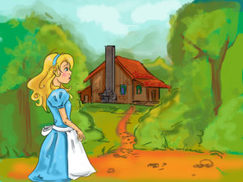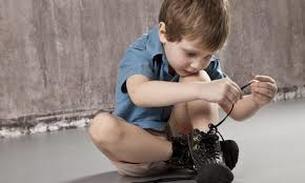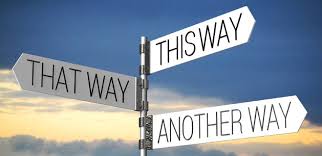
My coach and I were working on my back handspring, which I had yet to do unassisted. The learning process included steps where my coach was on the floor "spotting" me as I entered the back handspring, the palm of his hand catching the small of my arched back, assisting with a little push to get me up and over. As I progressed, his spotting became less involved. Even though I could feel his hand on my back, the push of his hand was almost non-existent. Next, he removed his hand entirely and "spotted" me by just standing on the floor adjacent to the path I was taking. I continuously executed the back handspring accurately and unassisted. The final step in my process of ownership then took place: he removed himself from the floor entirely. I had no spotter.
I remember feeling nervous as I stood ready to run my first solo pass on the floor. Obviously, I was nervous about failing, yet I really had no evidence supporting this, as I had been executing the back handspring without fail or his assistance for over a week. Yet psychologically, because he wasn't on the floor, I knew I was on my own. And that simple thought messed with my head. I remember taking my run and, just before executing my first truly solo back handspring, thinking, "What if I don't make it?" I'm sure you can guess the outcome. I didn't make it. I landed on the back of my head and woke up in my coach's office not knowing my phone number (he asked me to call my parents to pick me up) or what day it was! Technically I was ready, but psychologically I was not.
If you are interested in nurturing your students into self-directed, accountable learners (and I'm assuming, since you signed up for my Empowered Music Teacher emails, you are!), then I invite you to try this. At your next lesson, make sure your student is perfectly clear as to his/her goal. "Workout the notes/articulation/dynamics/fingering/interpretation for the next two/four/eight measures." Once the student knows the goal, your job is done. Simply say to them, "So I believe you understand what you are trying to accomplish. In which case, the only thing I can do is be in your way. I'm going to move my chair so that you can concentrate without me being in the picture. When you are done or get stuck after trying everything you know to accomplish the goal, then you can turn to me. Okay?" Now it's time for you to sit back, really back. When I say back, I literally mean, move your chair into a position to which they cannot see you or feel your presence. Let them "fly solo" in their process. You simply get to observe. Avoid all urges to help them unless they ask for help (knowing when to ask for help is an extremely important part of becoming a self-directed learner.)
Try it and see how it feels to you. At first, you might have a difficult time, your inner teacher/musician wanted to quickly fix their mistakes. But, once you sit back, you might find that they are more competent then you gave them credit for. Or you might find out why, when they practice at home, their practicing process is yielding less than desirable results. Both insights will provide you with valuable information. Also, once your realize this, your job will become exponentially less stressful and your students will become increasingly more proud of their accomplishments. You will be well on your way to giving them the tools to create their own personal successes throughout their lives.
Most of the tips in this blog are culled from my two books, Coffee With Ray and Lessons With Matt. This one, however, is a bit of a spoiler alert. It is from my new book which is scheduled to be published mid 2018. If you would like more strategies that will both nurture your students into self-directed learners while making your job less stressful and more rewarding, please check them out on Amazon.







 RSS Feed
RSS Feed